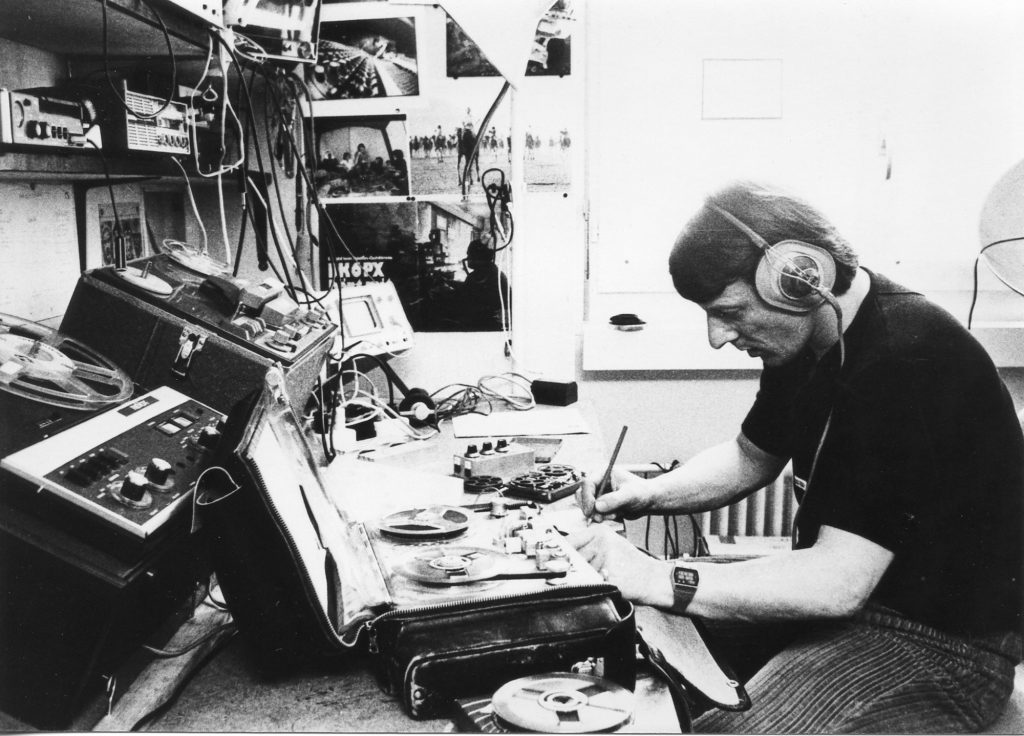Patrick Holzapfel
The Film Museum celebrates the 80th birthday of the International Federation of Film Archives FIAF. The program titled “Forever Film“ is something pretty close to the beautiful chaos of what FIAF founding member Henri Langlois must have envisioned when he spoke about a true history of cinema made possible by the association of international film archives. Film history in a nutshell.
In practical terms, the Film Museum asked “friends and neighbors“ to burrow deep into their archives and send suggestions composed of either unique or very special films from their collection. During the following days and weeks I am going to publish my notes on the screenings of what seems to me one of the most exciting retrospectives in this year’s cinema calendar. Is it only exciting because I have seen so little and not even heard of some of the films? The thrill of anticipation, cinema as a treasure hunt. Or is there more to this idea of a beautiful chaos? In some way I feel like opening the gifts brought from the cellars of cinema’s memory.

– Fredi M. Murer famously answered the question of what he wants to be in life with: “I want to be a stranger.“ Even if his second feature length work Grauzone (1979) may appear as a fittingly odd work, it seems to me to be about the opposite. It is about the longing for something real, a touch, a love. It is about not wanting to feel strange.
– The Cinémathèque suisse represented by their director Frédéric Maire brings as a gift a great 35mm copy. As we will see many DCPs during this retrospective we should honour this moment which is still so much more than nostalgia.
– Fredi M. Murer is one of the most important auteurs of Swiss cinema. He grew up in Altdorf where William Tell’s apple-shot is supposed to have taken place. His Wir Bergler in den Bergen sind eigentlich nicht schuld, daß wir da sind (1974) and Höhenfeuer (1985) are a testimony to the greatness of Murer.
– In one of his last letters written to Robert Klopstock, Franz Kafka declared that love would be considered a sickness if it wasn’t so common. Grauzone opens up a very similar, yet less cynic topic: Conformism would be considered a sickness if it wasn’t so common.
– A predator made of chinaware standing in a depressing living room becomes the ultimate metaphor for impotence caused by the lack of freedom (which might be a lack of choice).
– The film feels uncannily timeless that is to say it feels exigently contemporary. People grow tired of something. Suicide rates increase. They want to go out, the want to go to places they have grown up at, they are not able to listen to each other confined in blocks of concrete. Today we call it burnout.
– This film tells us more about the place the protagonist of Christian Schocher’s Reisender Krieger comes from and returns to. It is the place where life is supposed to take place but where first world comfort and pressures of capitalism have created a non-place of inexistent relationships.
– As Frédéric Maire explained, the film anticipated not only those feelings but also two historical events in Switzerland. The first is related to the youth protests in May 1980, usually labelled as “Züri brännt“, the second to the “Scandale des fiches“, a mass surveillance scandal that shook Switzerland by the end of the 1980s. The latter is mirrored in the muffled paranoia in the film. Cameras and sound recorders are everywhere. Voyeurism, anonymity and a constant menace resonating from voices on the radio reveal a world which has lost contact with reality.
– There is isolation but there is no escape.
– One might want to think about relations between surveillance and the archive. In its final act of revolt Grauzone can also be understood as a statement for making archives accessible to everyone.
– In a hypnotic and unforgettable scene which – like so many in the film – drifts at the edge of impuissance and dreamlike resignation a horse on a screen moves closer and closer towards the camera. It stops. There is a cut and we see an extreme close-up of an eye of the horse. Immediately we are reminded of Luis Buñuel and his famous shot of a cow’s eye in Un Chien Andalou (1929). Murer – like Buñuel – cuts the eye. However, he does so by cutting the screen, not the real eye. The return of light to the scene reveals his magic trick. In a film full of sounds and representation it seems telling that not even violence happens directly anymore. It is done to the medium, not to the horse.
– It is one of those films after which one leaves the cinema and everything appears to look and feel different. Further away and closer at the same time.